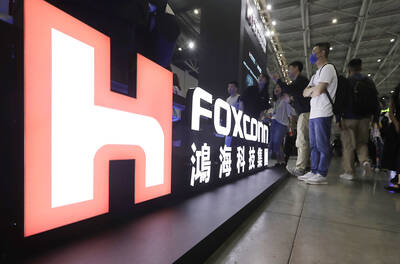State-run Taiwan Power Co (Taipower, 台電) said yesterday it had sold NT$11.6 billion (US$369.6 million) worth of unsecured guaranteed corporate bonds in an auction. The company plans to use the proceeds to support its capital requirements.
In a statement posted on its Web site, the company said it auctioned off NT$2.6 billion in five-year bonds, NT$3 billion in seven-year bonds and NT$6 billion in 10-year bonds.
Yesterday’s auction was the company’s second sale this year after it sold NT$17.9 billion of bonds on March 12. So far this year, Taipower has sold NT$29.5 billion of bonds following a total of NT$58.62 billion sold last year to fund capital spending on power generation.
Taipower said yesterday it planned to issue the new corporate bonds in early June. Taipei Fubon Bank (台北富邦銀行) and Mega International Commercial Bank (兆豐國際商銀) will act as the guarantors for the proposed bond issue, with Standard Chartered Bank Taiwan Ltd (渣打銀行) serving as the main underwriter, the statement said.
Based on the results of the auction, Taipower will pay a yield of 1.38 percent on the five-year bonds, 1.75 percent on the seven-year notes and 1.83 percent for the 10-year securities.
The seven-year and 10-year bonds will be repaid in a lump sum at maturity, while the five-year bond will be repaid in two equal installments, one each in the fourth and fifth years, respectively, Taipower said.

A proposed 100 percent tariff on chip imports announced by US President Donald Trump could shift more of Taiwan’s semiconductor production overseas, a Taiwan Institute of Economic Research (TIER) researcher said yesterday. Trump’s tariff policy will accelerate the global semiconductor industry’s pace to establish roots in the US, leading to higher supply chain costs and ultimately raising prices of consumer electronics and creating uncertainty for future market demand, Arisa Liu (劉佩真) at the institute’s Taiwan Industry Economics Database said in a telephone interview. Trump’s move signals his intention to "restore the glory of the US semiconductor industry," Liu noted, saying that

On Ireland’s blustery western seaboard, researchers are gleefully flying giant kites — not for fun, but in the hope of generating renewable electricity and sparking a “revolution” in wind energy. “We use a kite to capture the wind and a generator at the bottom of it that captures the power,” said Padraic Doherty of Kitepower, the Dutch firm behind the venture. At its test site in operation since September 2023 near the small town of Bangor Erris, the team transports the vast 60-square-meter kite from a hangar across the lunar-like bogland to a generator. The kite is then attached by a

Foxconn Technology Co (鴻準精密), a metal casing supplier owned by Hon Hai Precision Industry Co (鴻海精密), yesterday announced plans to invest US$1 billion in the US over the next decade as part of its business transformation strategy. The Apple Inc supplier said in a statement that its board approved the investment on Thursday, as part of a transformation strategy focused on precision mold development, smart manufacturing, robotics and advanced automation. The strategy would have a strong emphasis on artificial intelligence (AI), the company added. The company said it aims to build a flexible, intelligent production ecosystem to boost competitiveness and sustainability. Foxconn

STILL UNCLEAR: Several aspects of the policy still need to be clarified, such as whether the exemptions would expand to related products, PwC Taiwan warned The TAIEX surged yesterday, led by gains in Taiwan Semiconductor Manufacturing Co (TSMC, 台積電), after US President Donald Trump announced a sweeping 100 percent tariff on imported semiconductors — while exempting companies operating or building plants in the US, which includes TSMC. The benchmark index jumped 556.41 points, or 2.37 percent, to close at 24,003.77, breaching the 24,000-point level and hitting its highest close this year, Taiwan Stock Exchange (TWSE) data showed. TSMC rose NT$55, or 4.89 percent, to close at a record NT$1,180, as the company is already investing heavily in a multibillion-dollar plant in Arizona that led investors to assume